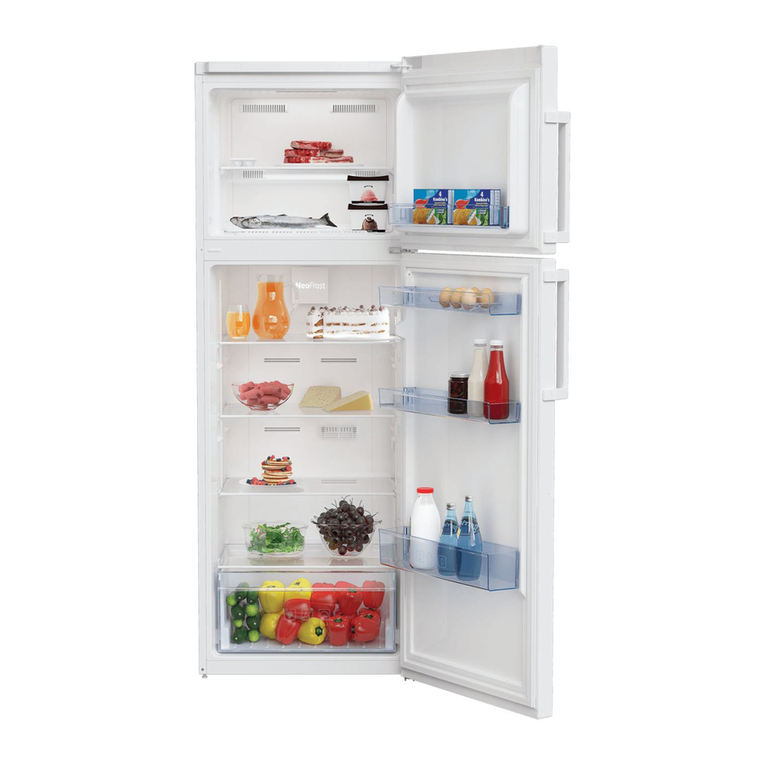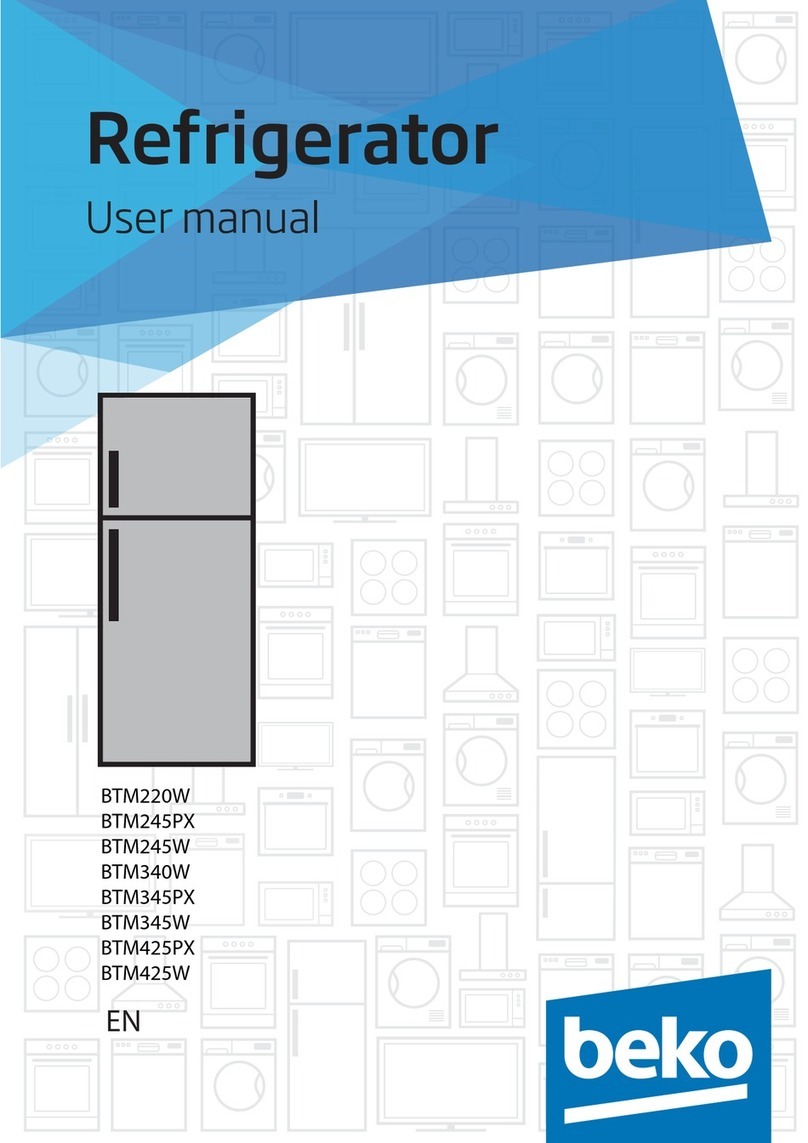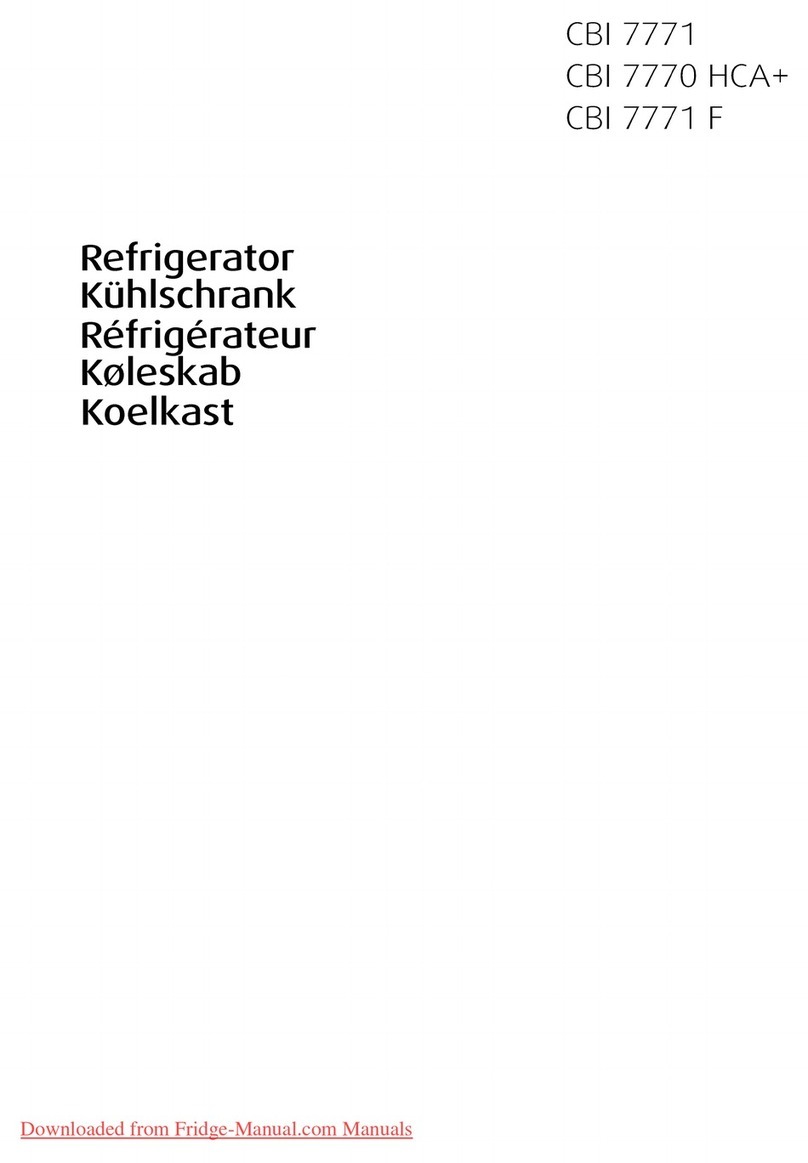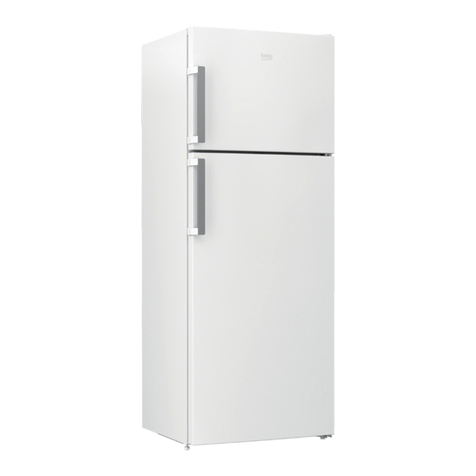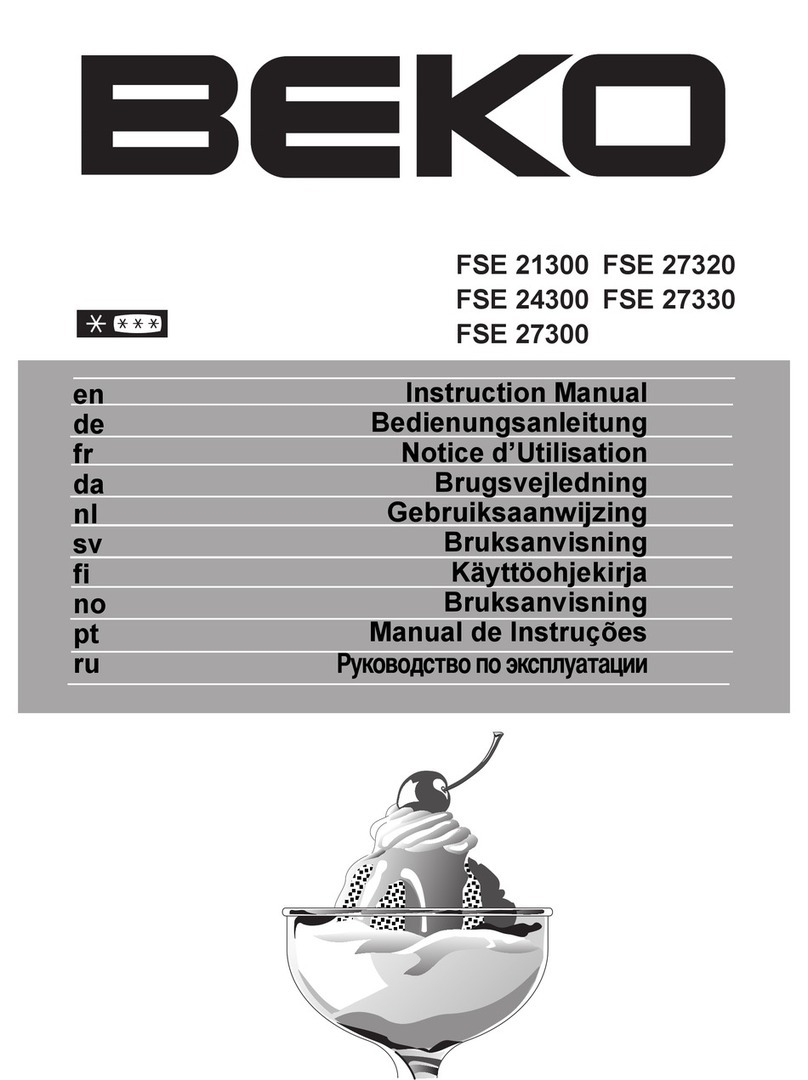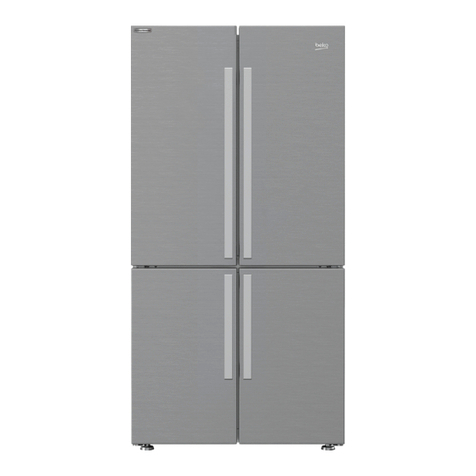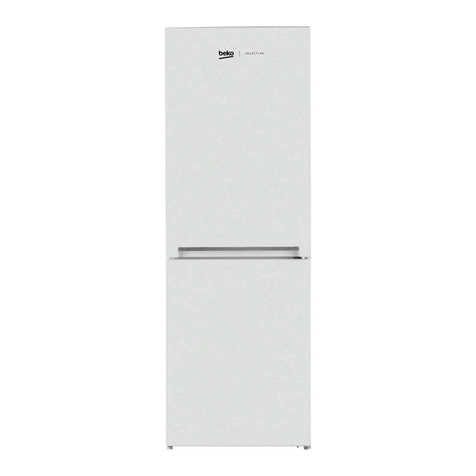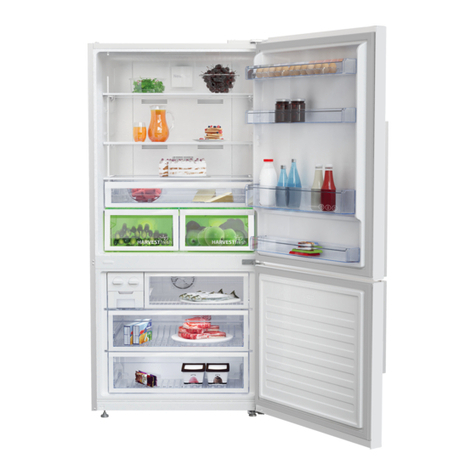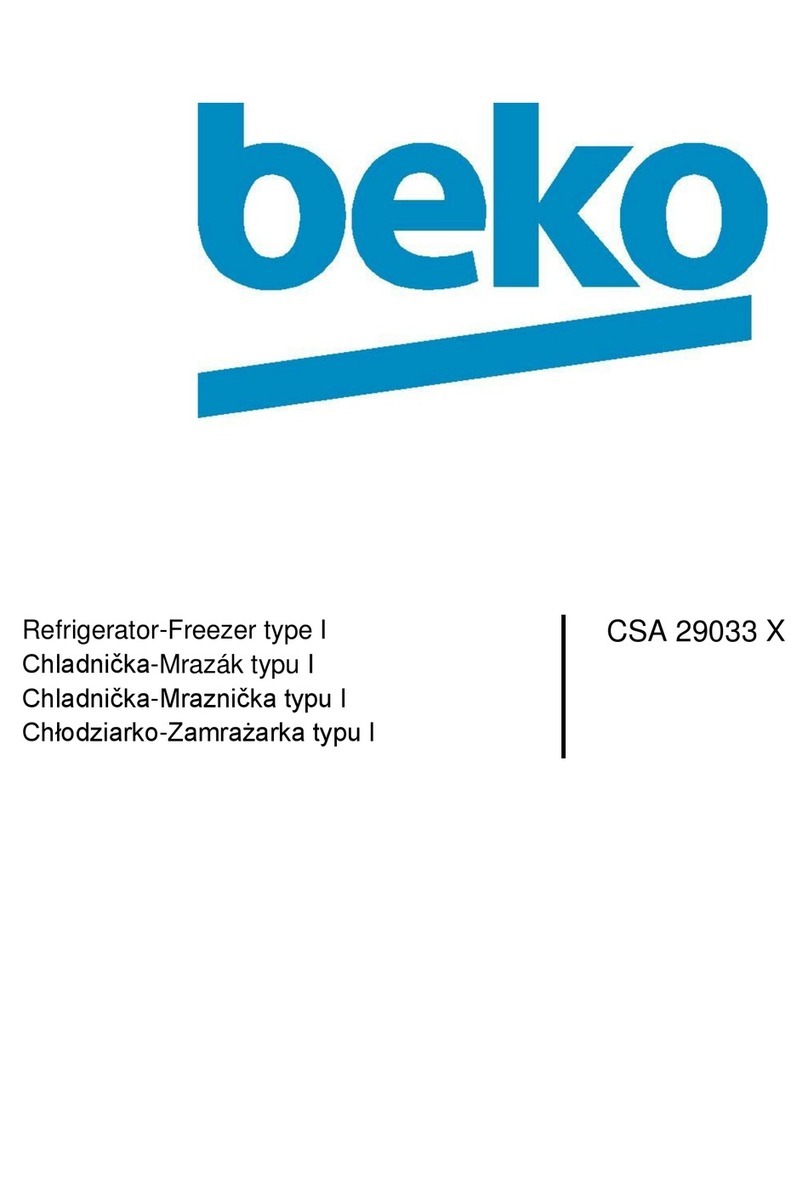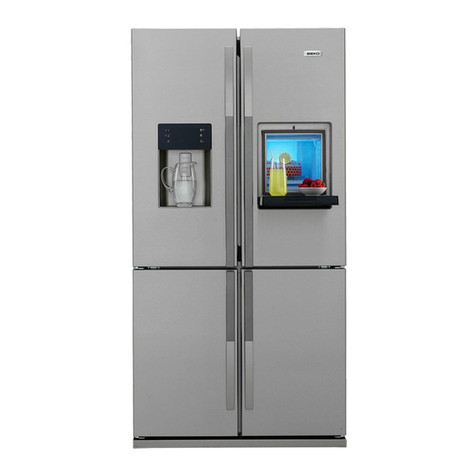EN
9
. Foods more than the capacity of the
product should not be kept in the
product. It may fall when the door is
opened and cause injury or damage.
Similar problems may occur in case
of putting things on the product.
. Products that need a precise
temperature control (vaccines,
heat-sensitive medicine, scientific
materials, etc.) should not be kept in
the refrigerator.
. Refrigerator should be disconnected
if it is not going to be used for a
long time. Any problem in the cable
insulation may cause fire.
. Dirt and dusts on tip of the electric
plug must be cleaned, otherwise,
they may cause risk of fire.
. The product may move when level
adjustment feet of the product do not
stand on the floor well.
. If your product has a door handle, the
product must not be pulled by the
handle, because the handle may be
forced out.
.Care should be paid as there is risk of
squeezing hands or feet between the
movable parts inside the product.
Child safety
. If the door has a lock, the key should
be kept away from reach of children.
. Children should be supervised to
ensure that they do not play with the
appliance
Things to be done for energy
saving
. Do not leave the doors of your
refrigerator open for a long time.
. Do not put hot food or drinks in your
refrigerator.
. Do not overload your refrigerator so
that the air circulation inside of it is not
prevented.
. Do not install your refrigerator
under direct sunlight or near heat
emitting appliances such as ovens,
dishwashers or radiators.
. Pay attention to keep your food in
closed containers.
. Maximum amount of food can be
put in your refrigerator's freezer
compartment when the freezer
compartment shelf or drawer
is removed. Declared energy
consumption value of your refrigerator
was determined when the freezer
compartment shelf or drawer was
removed and under maximum
amount of food load. There is no risk
in using a shelf or drawer according
to the shapes and sizes of the foods
to be frozen.
HCA Warning
If your product is equipped with
a cooling system that contains
R600a:
This gas is flammable. Therefore, pay
attention to not damaging the cooling
system and piping during usage and
transportation. In the event of damage,
keep your product away from potential
fire sources that can cause the
product catch a fire and ventilate the
room in which the unit is placed.
Ignore the warning if your product
is equipped with a cooling system
that contains R134a.
You can see the gas used in
production of your product on the
rating plate that is located on the left
inner part of it.
Never dispose the product in fire.


